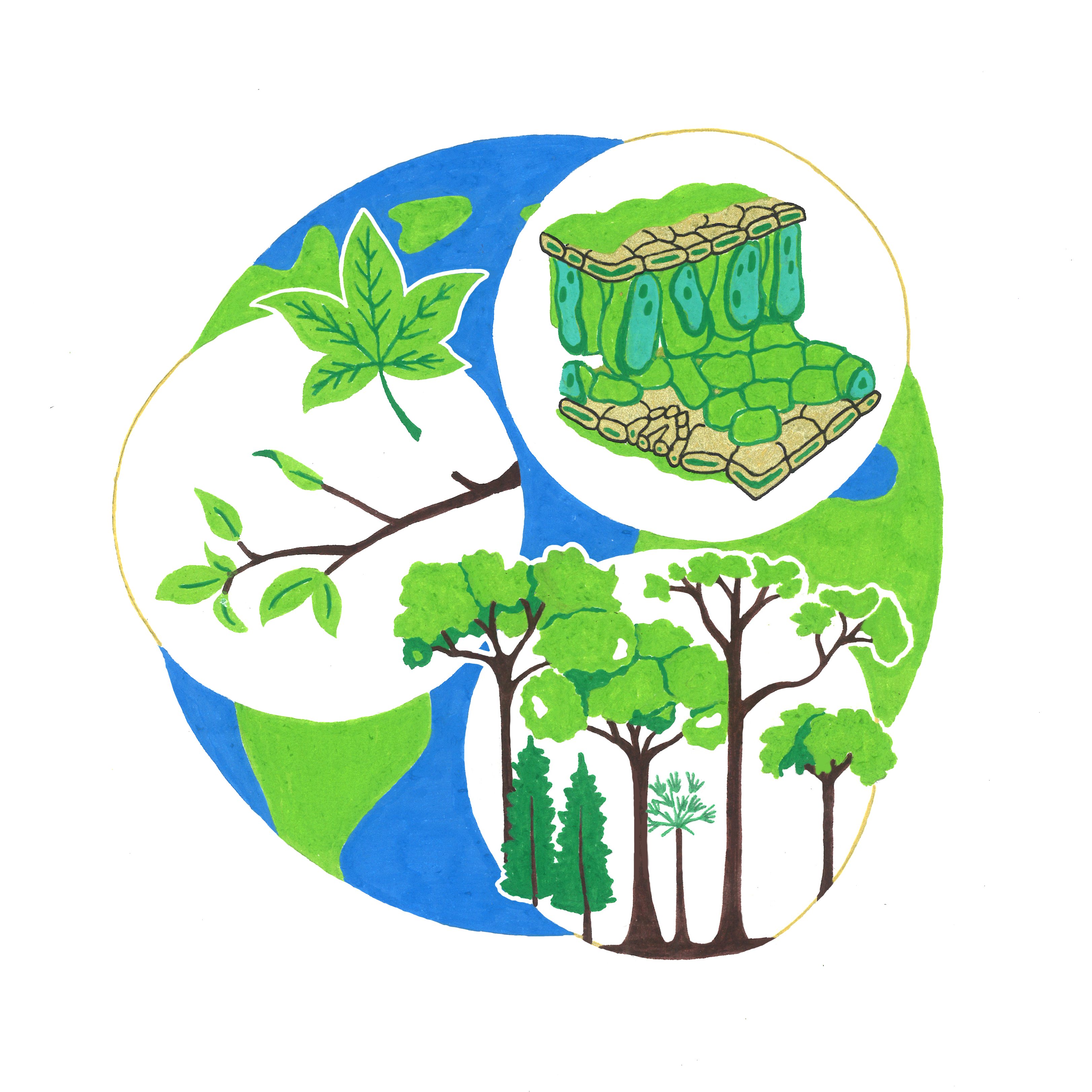Posts from December 2022
From leaf cell to tree canopy scale
Leiden, the Netherlands
How to model vegetation on Earth
Can we measure life on exoplanets? Well this firstly depends on our definition of life. Well, plants are definitely crucial for all life on Earth. So, maybe we can change our question to: Can we measure plants on exoplanets? To answer this question we have to study and understand how we can detect vegetation on Earth. Only then we might be able to understand how vegetation would look like on planets located at astronomical distances and most importantly: what instruments do we need to detect vegetation on planets outside our solar system?
Since I will be focussing on detecting vegetation, I would like to gain more knowledge about plants in general. Biology was not a mandatory course for me during high school. This means that I only have basic knowledge regarding leaves, plants, trees and nature in general. What I do know is that plants play a major role in the history of our planet Earth. They harvest solar radiation and convert it into chemical energy by means of the process of photosynthesis. As a result, they reduce atmospheric carbon dioxide concentrations, increase oxygen levels and therefore basically produce indispensable fuel for almost all other life on Earth.
In addition to acting as fuel, plants accelerate Earth's water cycle due to the so-called transpiration process. Basically, its a kind of... sweating. What what?! Well, plants absorb water in liquid form through their roots and release this same water as water vapour into the atmosphere though small stomata on their leaves. Only a small amount of the water remains within the plant.
Ok, cool, so I do know a bit about plants. But how can I further expand my knowledge? Luckily, as a researcher nowadays it is rather easy to build collaborations connecting multiple disciplines and institutes. Last year, I was able to connect with the Institute of Environmental Sciences. They created this amazing computermodel that simulates the absorption, reflectance and transmission of sunlight as soon as it hits the surface of a plant.
Using this model we can calculate remotely sensed spectral signatures of plants from outer space. In the coming weeks I will be thinking about which model scales would be interesting for my research, what types of plants I need to simulate and the importance of temporal changes, like winter and summer or sun and shadow.
- Model scales: the scales for which you can model vegetation go all the way from microscopic to macroscopic scales. You can model the scattering of light between features as small as individual cells or molecules within leaves or as big as scattering between multiple leaves on tree branches. We are even able to simulate forests by adding multiple trees together.
- Types of plants: we can model specific species of plants into great detail. However, we see an average of different types of plants when observing green patches on the Earth's surface from outer space. For some locations we might not have a clear view on what type of plants we will see. Therefore, we need to consider to calculate several general averaged signals of vegetation for different locations on Earth.
- Seasonal changes: the seasons have a big influence on vegetation, and therefore on the spectral signals we would be able to detect from outer space. In the spring the leaves (and soil) contain more water whereas in the summer leaves might be very dry. When it comes to modelling individual leaves, these specific details regarding the water content as well as plants standing in either the full sun or shadow become very important.
December 15, 2022

